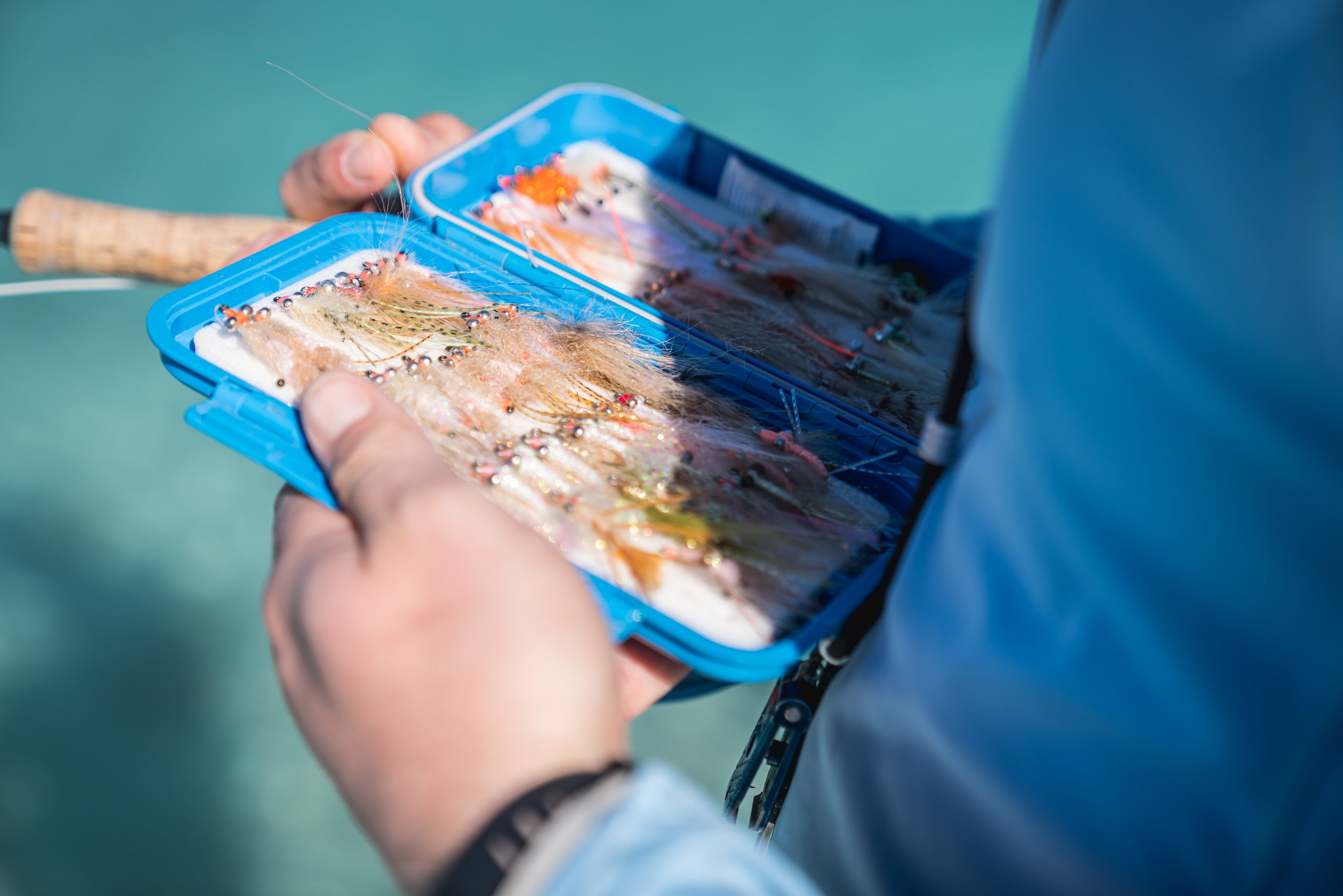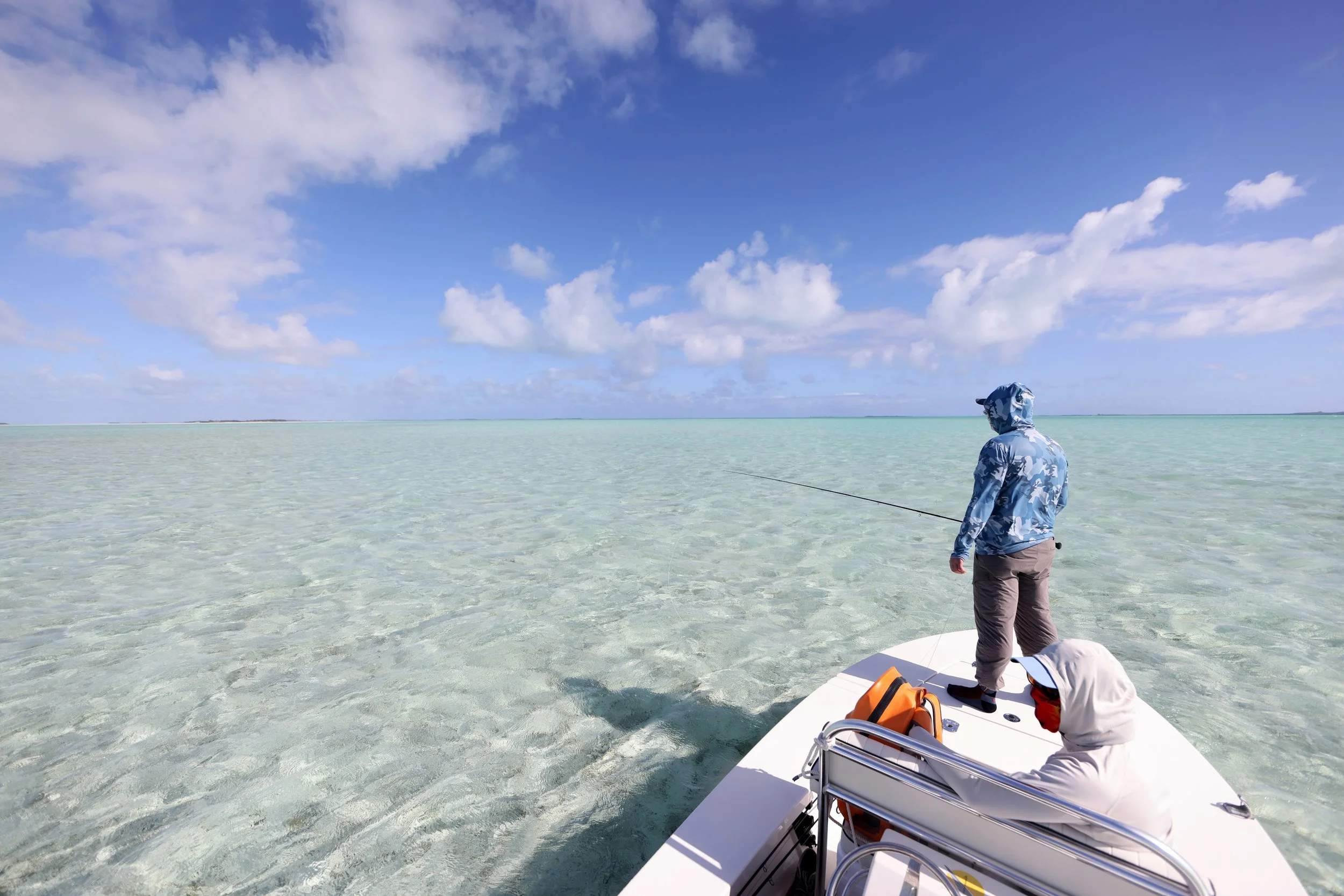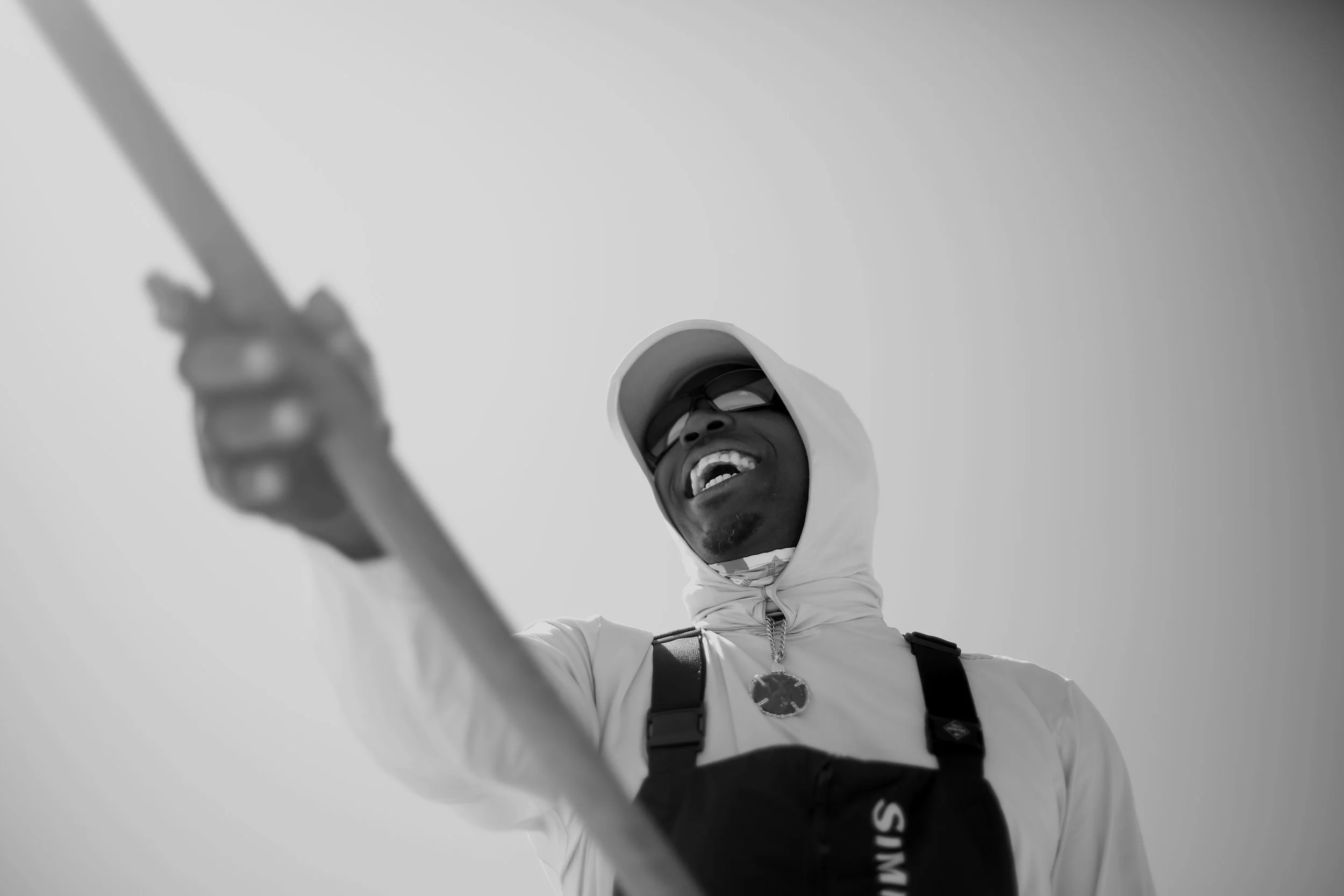Flies for Soul Fly Lodge & The Bahamas, pt. I: Fly Selection Methodology
Introduction
Fly selection is a constant topic of conversation at Soul Fly Lodge. Our guides and managers are always thinking about, discussing, and testing fly patterns and presentations in efforts to build confidence, increase hookup rates, and ultimately land more best-of-the-trip or even once-in-a-lifetime fish. In the Berry Islands, there isn’t, and never will be, a silver bullet to fly choice nor a one-and-done selection of fly patterns that will work in every situation, and we embrace these facts in our hypothesizing. Knowing that there’s never an end-all-be-all answer is also part of the fun because our work (going fishing) is never done!
Of course, these subjects carry-over to pre-trip discussions with our angling guests as well. And while we always do our best to help folks prepare their fly boxes for success upon arrival by suggesting specific patterns, sizes, etc., we also want to encourage our anglers to approach fly selection from a problem-solving point of view, as opposed to a simple, bulleted packing list lens.
Where we’ve landed is a fly selection ‘methodology’ – an approach to stocking a fly box that will not only help ensure having appropriate patterns for as many different angling scenarios as possible, but will also help anglers better understand the reasoning behind specific fly choices when on the flats, and help to prepare anglers for the various fishing scenarios that they’re likely to encounter when they arrive.
Ultimately, we hope this methodology avoids the all-too-frequent situation in which an angler arrives at a fishing destination and proudly displays their newly-filled fly box to their guide, only for their guide to say something to the effect of, “Those are all very nice, but let’s use one of mine instead.”
Fly Selection Methodology
In the coming weeks, we’re going to share the specific application of this methodology to choosing flies for both bonefish and permit but first, we want to introduce the approach itself. Simply put, what this methodology does – in infographic form – is detail the most common fishing scenarios that anglers will encounter when targeting each species (in other words, ‘the problem’) and then provide example patterns that are best applied to each scenario (‘the solution’).
The example patterns are certainly worthy flies to have in your boxes in and of themselves, but we’re providing them more as representations and models than specific ‘must-haves’. That is, when you’re browsing the fly bins at your local fly shop, or inspecting custom fly tyers’ patterns online, we hope you’ll be able to identify comparable flies and make your purchases accordingly. Then, when you arrive at Soul Fly Lodge, you’ll have a selection of patterns curated based on the various anticipated fishing scenarios; and, you’ll know why you bought a certain fly as much as which fly you bought.
It’s worth noting that the Berry Islands are a unique fishery, even within the Bahamas. Whereas many other locales in the Bahamas present anglers with a mix of creeks, mangrove shorelines, and flats, at Soul Fly Lodge, we are generally fishing clean, white-sand flats adjacent to deep water. This fact has a significant effect on how we approach our fly selection and is good to keep in mind because the fly patterns and angling approaches that work in other parts of the Bahamas, or for bonefish in other places of the world, may not be appropriate or effective when fishing the Berrys.
Concepts & Terminology
There are two infographics forthcoming – one for bonefish fly selection and one for permit fly selection – and each will cross-reference situational fishing variables, fish behavior, appropriate angling approach, and fly presentation, leading to the example fly patterns themselves. Within the infographics are several concepts and terms that you are likely already familiar with, but we want to elaborate on each and, moreover, describe their implications on fly pattern choice.
Water Depth: This element is the key driver to our methodology, and while we all know how to define water depth, what’s important here is understanding that there are general ranges of water depth in which you’ll be fishing and each equates to a different type of presentation and type of fly. When it comes to these ranges, we’ve provided several ways to visualize and conceptualize the variations: depth measured in inches; depth measured on the angler’s body; and the corresponding terminology that Soul Fly guides will use to describe the depth.
Fish Behavior: Depending on the depth we’re fishing in, we can expect bonefish and permit to behave accordingly. For example, in extremely shallow water situations, we can anticipate to find bonefish tailing often, whereas in much deeper scenarios, there’s simply too much water for a bonefish’s tail to break the surface. Water depth also has a direct correlation with how wary a target fish will be: the less water (more shallow), the less comfortable (more spooky) the fish will be.
Angling Approach: Following fish behavior is an angling approach; we cater our actions based on the fish’s. This translates into two primary details: how we’re actually making our cast to the fish, and where we place the fly. In the Berry Islands, we are either fishing out of a flats skiff or we are wading on foot; again, these are typically determined by water depth. More importantly, our angling approach is based on a ‘lead’, which means how far from the fish we want to deliver the fly.
Fly Weight: Another easily-defined term on its own (light or heavy), and easy-enough to consider relative to water depth (more depth, heavier fly), but what’s critical to conceptualize here is the relationship between depth, fish behavior, lead, and fly weight. Generally speaking, when it comes to angling approach, the more shallow the water, the more wary the fish will be, and the lighter the fly should be.
Suggested Patterns: Here’s where the rubber meets the road, or the hook meets the salt. Linked in this part of the infographic are several suggested patterns based on the various combinations of scenarios and elements laid out above. We recommend studying these specific patterns, considering how they meet the requirements as described in the specific angling scenario, and then finding similar patterns at your local fly shop or from your favorite custom tyer.
Exceptions
One of the many things that makes fly fishing so intriguing, fun, and challenging is that there are no absolutes, and there are always exceptions. Our fly selection methodology is no different, so as we present our bonefish and permit fly selection infographics, we’ll also mention special circumstances and situations that break the ‘rules’ of our approach. This is why we preface many of our statements with “generally” or “typically”.
Many more details are to come but for now, we’ll plant a couple seeds of these exceptions. For bonefish, a certain consideration lies in how many fish are swimming together. Specifically, is the target fish ‘a solo’ or one of ‘a double’, or is the fish part of a large school of bonefish? Depending on the answer, the angling approach will differ, and we’ll cover those instances.
Another element that significantly affects our methodology is the conditions. Is it windy and the water choppy, or is it calm and the water surface like glass? Naturally, such variations will also require a change in our angling approach.
What’s Next
We’re excited to share more details and specifics of this methodology in upcoming Soul Fly Journal posts. Next, we’ll apply this fly selection methodology to both bonefish and permit flies and present the corresponding infographics to help you fill your fly boxes for your upcoming trip.
Stay tuned!
Read more on the Soul Fly Journal:











